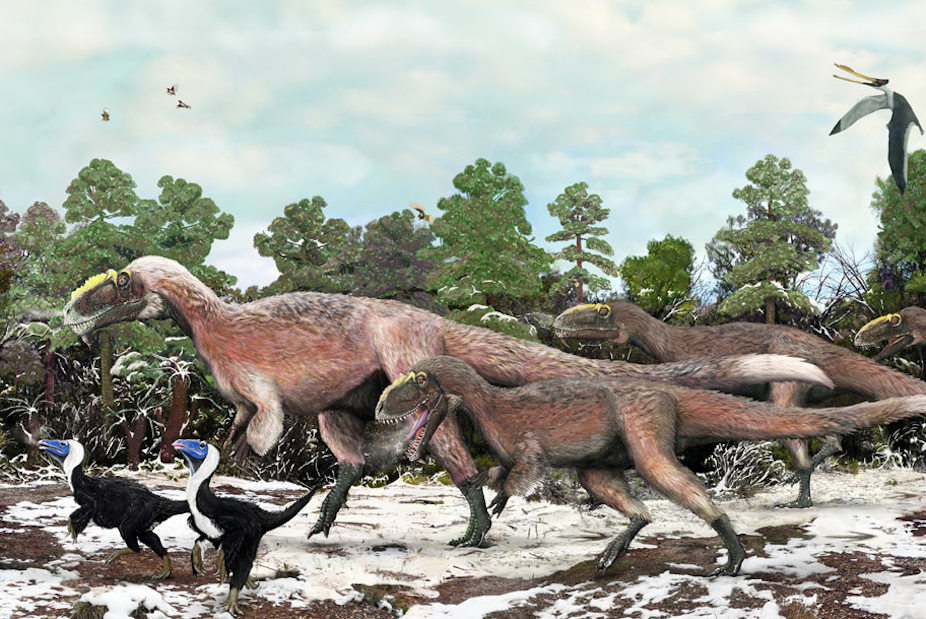A newly discovered species of feathered tyrannosaurus, Yutyrannus huali, grew up to 9 metres in length and weighed about 1400 kg, making it 40 times heavier than the largest previously known feathered dinosaur, Beipiaosaurus, a team of scientists has reported.
Although smaller than its more infamous relative, Tyrannosaurus rex - which came 60 million years later - it was still too big to fly.
The name of the new species means “beautiful feathered tyrant” in a combination of Latin and Mandarin. Three almost complete specimens were collected from a single quarry in Cretaceous beds in Liaoning Province, and are described by Chinese and Canadian scientists in this week’s issue of the journal Nature.
“The feathers of Yutyrannus were simple filaments,” explained Xu Xing of Beijing’s Institute of Vertebrate Paleontology and Paleoanthropology, the lead author of the study. “They were more like the fuzzy down of a modern baby chick than the stiff plumes of an adult bird.”
The large size of Yutyrannus and the downy structure of its feathers would have made flight an impossibility, but the feathers may have had another important function – insulation.
“The idea that primitive feathers could have been for insulation rather than flight has been around for a long time,” said Corwin Sullivan, a Canadian palaeontologist involved in the study. “However, large-bodied animals typically can retain heat quite easily, and actually have more of a potential problem with overheating. That makes Yutyrannus, which is large and downright shaggy, a bit of a surprise,” Dr Sullivan said.
While the Cretaceous Period was generally very warm, Yutyrannus lived during the middle part of the Early Cretaceous, when temperatures are thought to have been somewhat cooler.
The gigantic Tyrannosaurus rex and its closest relatives, by contrast, lived in the warm conditions of the Late Cretaceous. Isolated patches of preserved skin from these animals show scales, not feathers, but the possibility that even they were partly feathered cannot be ruled out.
“Yutyrannus dramatically increases the size range of dinosaurs for which we have definite evidence of feathers,” Professor Xu said. “It’s possible that feathers were much more widespread, at least among the meat-eating dinosaurs, than most scientists would have guessed even a few years ago.”

